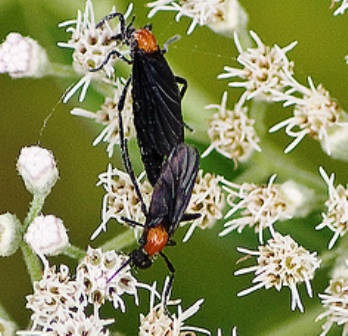With the cool weather came the lovebugs. They seem to appear from nowhere twice a year with some seasons being much worse than others. Two major flights occur each year, first in late spring, then again in late summer. (or in this case early fall). Lovebugs' (plecia nearctica hardy) are small black flies with red thoraxes. Lovebugs vary in length from one quarter to one third inch. Lovebugs do not sting or bite, but they do make a mess on motorist's windshields and front grills. Procrastination is never wise when dealing with lovebug splatters because they contain an acid that actually eats the paint off your car!
Urban legend holds that lovebugs are synthetic — the result of a University of Florida genetics experiment gone wrong. Speculation about the lovebug abounds. This is partly due to the fact that lovebugs are an unseen beneficial (lives and feeds in the thatch of grasses) for most of the year. As a result, most scientists are not as concerned with the details of this insect's life cycle, biology and other facets of its existence as they are with more serious pests. Research of L. L. Buschman showed that migration explained the introduction of the lovebug into Florida and other southeastern states, contrary to the urban myth that the University of Florida created them by manipulating DNA to control mosquito populations.


No comments:
Post a Comment